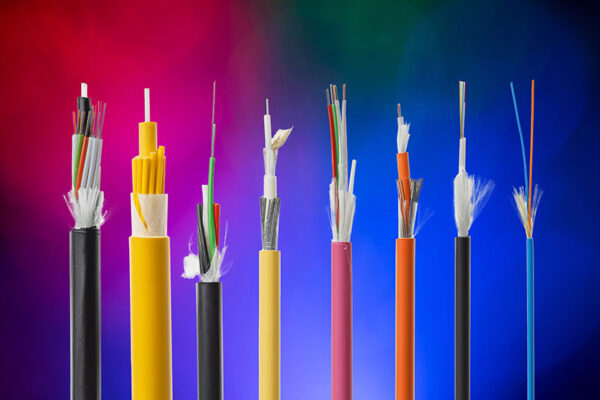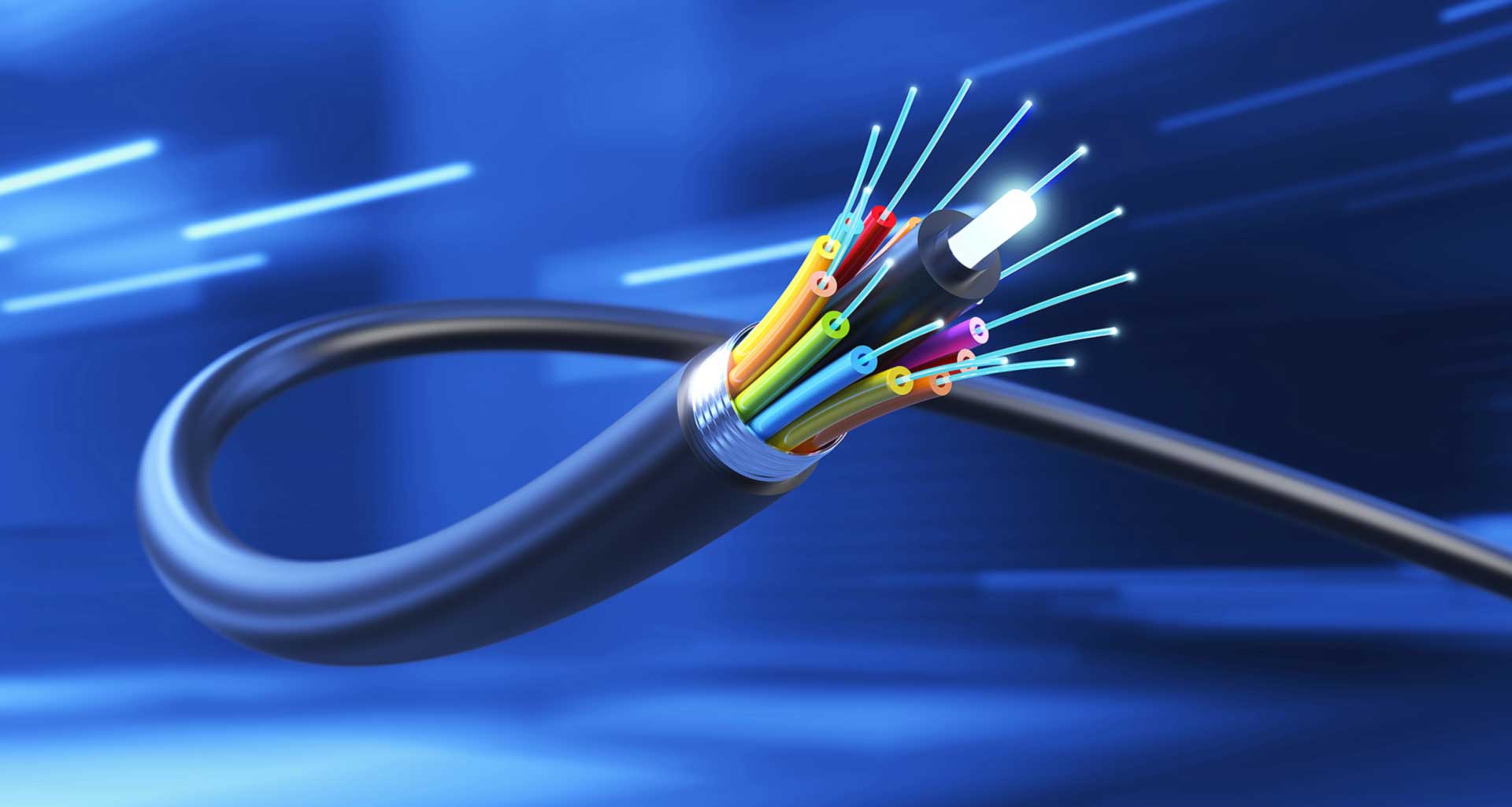While many of us have heard the terms “fiber optics” and “optical fiber technology” used to describe a sort of cable or a light-based technology, few of us truly get what they mean. Here, we cover the fundamentals of optical fiber technology, including how to deal with fiber optics, its purpose, characteristics, and benefits, as well as what fiber optics are utilized for today.
What is Fiber Optic Cabling?
Fiber optics, often known as optical fibers, are long, thin strands of glass with a diameter of approximately a human hair. Optical cables are made up of these strands stacked in bundles. They are used to send light signals over large distances, and we rely on them.
The light signals are encoded with data at the transmitting source… the same data that appears on a computer screen. As a result, the optical fiber transfers “data” to a receiving end via light, which is decoded as data. Fiber optics is thus a transmission medium – a “pipe” for transmitting signals across great distances at extremely high rates.
What Are Fiber Optics Cabling For?
Fiber optic cables were first created for endoscopes in the 1950s. The goal was to let surgeons to see into a human patient without undergoing significant surgery. Telephone experts discovered a technique to use the same technology to transmit and receive calls at the “speed of light” in the 1960s. In a vacuum, this is nearly 186,000 miles per second, but in a wire, it slows to about two-thirds of that speed. So, what are the applications of fiber optics? In a word, signal transmission, communication, and vision are all possible with this technology (video).
How Does It Work?
Light moves down a fiber optic cable by frequently bouncing off the cable’s walls. Each light particle (photon) bounces down the pipe, reflecting off the interior mirror.
The light beam flows through the cable’s core. The cable’s midsection and the glass structure make up the core. Another layer of glass wraps around the core to form the cladding. Cladding is used to keep light signals contained within the core.
Fiber Optic Cable Types
There’s several fiber optic cable installation types, we’ll explain the main ones here.
Single & Multimode Fiber
Light signals are carried in fiber optic cables in many modes. A mode is the path taken by the light beam as it travels down the fiber. Single mode and multimode fiber cables are available.
 The simplest structure is a single mode fiber. It has an extremely tiny core, and all signals pass right through it without bouncing off the edges. Single mode fiber optic cables are commonly used for CATV, Internet, and telephone applications, with single mode fibers bundled into a bundle carrying the signals.
The simplest structure is a single mode fiber. It has an extremely tiny core, and all signals pass right through it without bouncing off the edges. Single mode fiber optic cables are commonly used for CATV, Internet, and telephone applications, with single mode fibers bundled into a bundle carrying the signals.
The other form of fiber optic cable is multimode fiber. It’s nearly ten times the size of a single mode cable. The light beams can go through the core in a variety of ways and in many modes. These cables are only capable of transmitting data over short distances. As a result, they’re employed for interconnecting computer networks, among other things.
Plenum
Additionally, fiber optic cables can be designed to meet industry standards for installation in air plenums. Inside buildings, unique materials and compounds are utilized for jacketing. In the case of a fire, these “plenum cables” exceed flame and toxicity requirements.
Simplex & Duplex Optical Fiber
A single strand of glass is used in simplex fiber optic cable constructions. When only a single transmit and/or receive line is required between devices, or when a multiplex data transmission is employed, simplex fiber is typically used (bi-directional communication over a single fiber).
Two strands of glass or plastic fiber make comprise a duplex fiber cable. This cable, which is commonly available in a “zip cord” construction format, is most commonly used for duplex communication between devices that require separate transmit and receive signals.
Fiber Optics Installation Services
What are the applications of optical fibers? You may have seen colored lights carried by plastic fibers in decorative applications. The true glass fiber optic cables that are today the core of our communication and computing networks may not have been seen. Thousands of miles of fiber optic cable are buried underground, in tunnels, building walls, ceilings, and other areas where you can’t see them. Optical fiber is used in a variety of applications in our daily lives, including:
- IT & Computer Networks
- Communication & Broadcasting
- Specialized Military Equipment
- Medical Scans
If you are considering Fiber Optic Installation in your location, contact FutureLink today.

